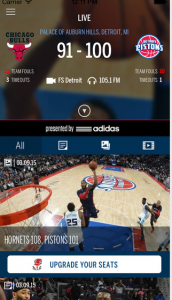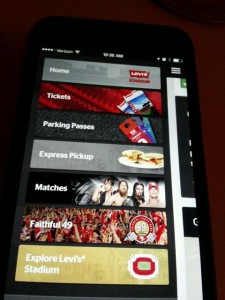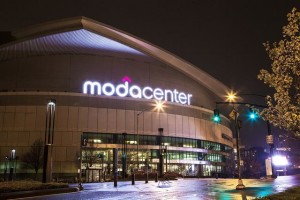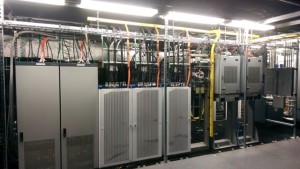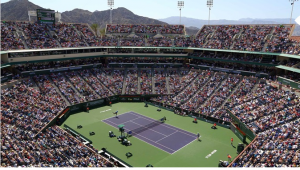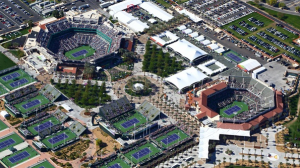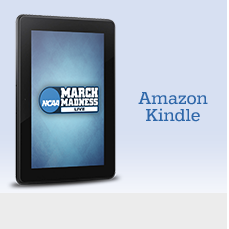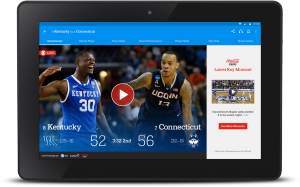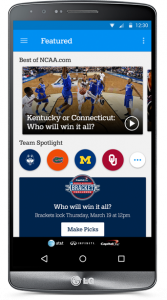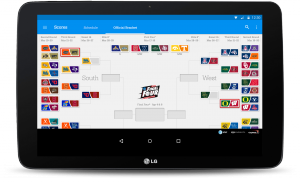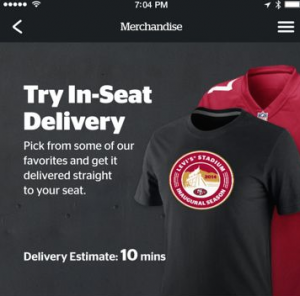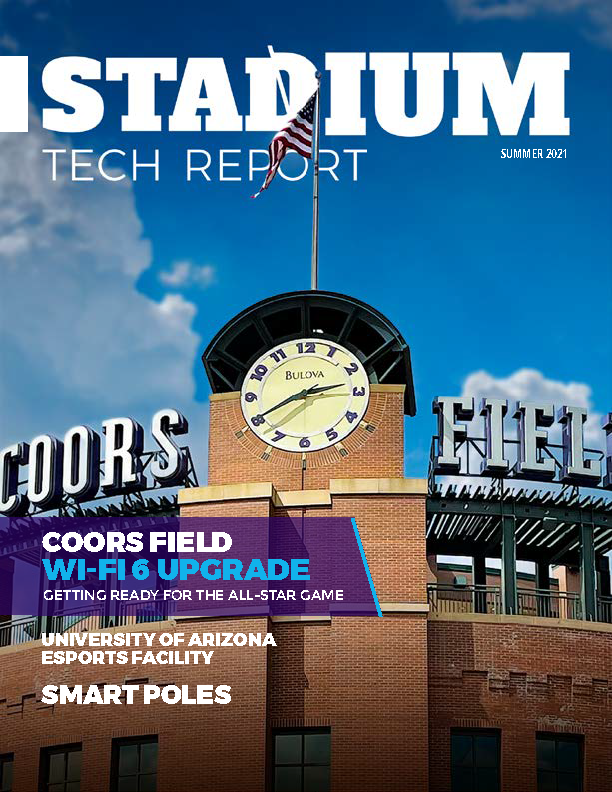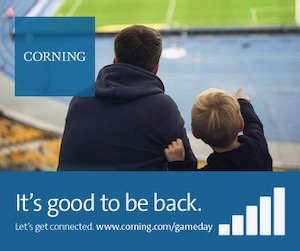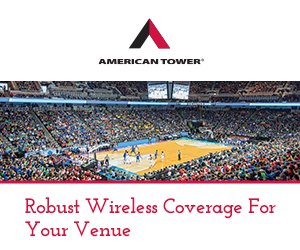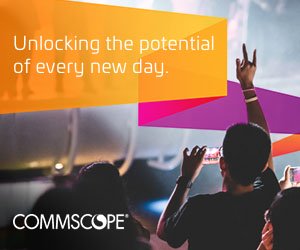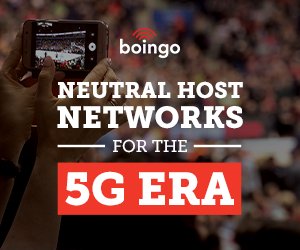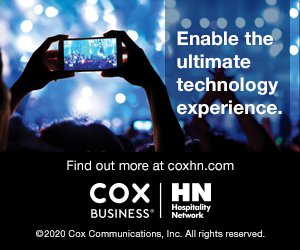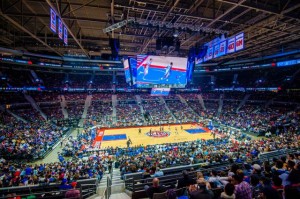
The Palace at Auburn Hills. Credit all photos, Palace at Auburn Hills (click on any photo for a larger image).
Fast forward a few years, and the situation is completely reversed. Not only is there a storm of wireless connectivity inside the Palace, that same Wi-Fi and cellular traffic is keeping fans inside, bringing new fans in and giving the Pistons management team better insight into what all those fans want.
Using technology as an “accelerant,” the Pistons have changed the game for the fans and for themselves, seeding a process that seems destined to help the team build business success as their fan base evolves into one that expects and delights from an always-connected experience.
In a story-telling twist, we’ll tell you one of the early ends to this tale now: Even though the Pistons have suffered on the court of late, finishing the 2013-14 season with a 29-53 record, the team this year had a season ticket renewal rate above 80 percent, according to the Pistons management. Either there’s massive optimism in Motor City, or the Pistons ownership team is doing something very right in making the game-day experience something fans want to keep experiencing.
If you want to believe more in the latter reason, then listen to what Dennis Mannion, president and CEO of Palace Sports and Entertainment and the Detroit Pistons, has to say: There are a lot of smart programs now in place and some that are just starting to take off, but none of it happens, he said, without a solid communications core.
“It always comes back to the great accelerator, technology,” Mannion said.
Building the network inside the building
Editor’s note: This profile is part of our new Stadium Tech Report HOOPS AND HOCKEY ISSUE, available for free download. In addition to this story it contains additional profiles and team-by-team tech capsules for all 30 NBA teams. Download your copy today!
Mannion, who joined the Pistons in 2011 following a long career in sports management that included time as the Los Angeles Dodgers’ president and COO, and stints with the Baltimore Ravens, Denver Nuggets and Philadelphia Phillies, said the new commitment to technology started at the Pistons’ ownership level, where they knew things needed to change.
“When I came in to the job we knew there needed to be some technology improvements [at the Palace],” Mannion said. “We needed to make games more of a happening for our fans.” As part of an overall stadium renovation project that cost somewhere between $13 and $15 million, the Pistons started bringing the Palace into the world of wireless connectivity.
For help, Mannion and the Palace team enlised a Detroit sports-stadium technology consulting firm called Nuvuz Sports, run by CEO Scott Wruble, a former tech exec with the NBA and MLB, and chief marketing officer Jim Wolski. According to Wolski, when the technology revamp of the Palace started in 2012, there was a bit of a connectivity hill to climb.“The entire building had nine cable modems, total,” Wolski said.
The first step was to start with a DAS, or distributed antenna system, to make sure cellular carriers could connect with their customers. The Palace team wound up picking Verizon Wireless to act as lead on a neutral-host DAS deployment, which is currently in the process of adding AT&T and Sprint to its system.
Opened in 1988, the Palace had some physical challenges when it came to wireless technology, including the omnipresent question of retrofits — where do you put the DAS head end? In the Palace’s case, the solution was a new building built outside, in a Palace parking lot.
Verizon helped on the next step in the deployment process by bringing in their longtime technology partner Ericsson to deliver the gear for the building’s Wi-Fi network. Though somewhat of a newcomer in the stadium Wi-Fi space, Ericsson’s long history in telecommunications equipment showed through with the Wi-Fi deployment, according to Mike Donnay, vice president for brand networks at Palace Sports & Entertainment.
“The performance from the Ericsson [Wi-Fi] equipment is super high,” said Donnay, who was the exec who had to leave the building to send the tweet before the renovation happened. Now, with 238 Wi-Fi access points in the venue (which seats 22,076 for basketball) Donnay doesn’t have any problems tweeting.
Nuvuz’s Wolski said that in addition to providing fan Internet access, the internal Wi-Fi network also powers the game-day ticketing operation as well as concession point of sale. It also is the base for a large suite of fan engagement platforms, which are hyper-targeted to the many different types of Pistons or other event fans who walk in the doors.
Clusters within the clusters
Kevin Grigg, vice president of public relations for the Pistons, said Mannion’s “big picture” ROI is to use technology to engage fans in a one-on-one relationship.
“The biggest challenge [in the past] has been if you are a fan and you buy a ticket, we didn’t know who you are,” Grigg said. “Now, we’re in a position to identify people during the engagement.”
Nuvuz’s Wolski concurs.
“It chages the game when you know who they [the fans] are,” Wolski said.
Mannion said the Pistons’ IT team is already well into the implementation of an elaborate fan-engagement system that breaks the fan base into multiple segments that can each be targeted with programs tailored to their wants and needs.
 “We have different fan bases, from those who buy courtside seats, to those in corprate suites to families,” Mannion said. “We have affinity groups, like ‘future Pistons,’ women’s groups, and people interested mainly in attending concerts. We have clusters within clusters. And we use a combination of media, memories and merchandise for each cluster.”
“We have different fan bases, from those who buy courtside seats, to those in corprate suites to families,” Mannion said. “We have affinity groups, like ‘future Pistons,’ women’s groups, and people interested mainly in attending concerts. We have clusters within clusters. And we use a combination of media, memories and merchandise for each cluster.”
On the team side, Mannion said that “even perceived ‘inside access’ is a real turn-on. Fans like to join, belong and brag.” Some ways fans can get “closer” to the team is to use the stadium app’s seat-upgrade feature (powered by partner PogoSeat) to purchase seats closer to the action, or by special access like post-game shootarounds on the court floor.
There is also a big focus on Pistons-related content, both from the team as well as from fans themselves. And increasingly, fans are turning to social media to share this content. The Pistons have responded with tricks like putting selfies tagged with the #pistonspride hashtag right onto the new huge center court video board.
The tech team also just added beacon technology to the Palace, and are already offering beacon-powered features like seat upgrades to fans who have seats in the upper levels, and discounts on merchandise to fans who are walking right outside the team shops. There are also scoreboard trivia contests and real-time fan polling, all of which keep fans engaged with the team and game even as they stare at their mobile devices.
“We wouldn’t be able to do all this without a connected arena,” Donnay said.
Connected now and for the future
Right now, Donnay said that approximately one-third of a regular Pistons game audience uses the Wi-Fi network, a take rate among the higher of reported crowd participation numbers. The Palace team also uses the Wi-Fi network to connect to 30 “smart carts,” which are mobile food carts that can be moved around (even outside the building) to take advantage of being where hungry fans are.
“It’s interesting to watch the heat maps of how the building is filling, and being able to tell concessions where to beef up,” Mannion said. In the past, he noted, many such game-day operations were decided by “gut feelings,” which could be right or could be wrong. Now, he said, there are facts and figures to back up the guesswork.
“Now you can still act on gut feelings, but you also have ways to prove what’s going on,” Mannion said. “You can do a digital promotion for food and beverage, and immediately measure the impact. That’s really fascinating.”
Even as they build on early successes, the team behind the Palace’s new tech operations knows that these are early days, and much work lies ahead. One current “big drag,” Mannion notes, is the plethora of social-media sharing platforms, a mix that includes Twitter, Facebook, Instagram, Vine, Snapchat and others, almost too many to track coherently.
There’s also a big challenge to keep pace with all the potential partners and digital features that could be added, like instant replays or food ordering for the stadium app; Mannion noted: “The question is, how do you create the right kind of [feature] incubation system, without spending too much money?”
At the very least, the Pistons team has grabbed a leading position in the connected-arena future, one where having advanced connectivity and engagement programs is table stakes to attract new potential season ticket buyers.
“We’ve seen colleges experience heartaches” when their fans leave because the stadiums don’t have connectivity, said Donney. “That’s the fan base that’s coming to the NBA. They’re going to expect that technology, so we’re going to have to be very good at it.”
So far, the Pistons and the Palace seem to be ahead of the curve of the new era of connected stadiums and the fans who fill them. Mannion, for one, knows he’s now in a much different business than the one he’s spent most of his career in.
“It’s a lot different now,” he said, “than just opening up the window and selling tickets.”
